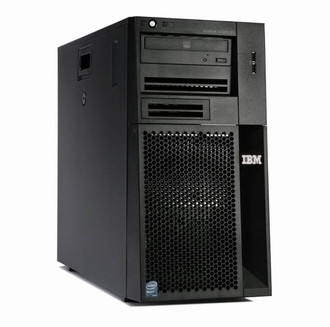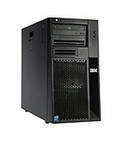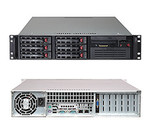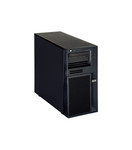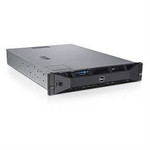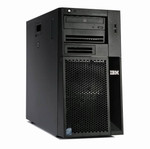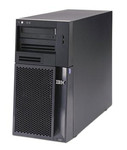Katalog
-
Katalog
- Antiquitäten & Kunst
- Auto & Motorrad: Fahrzeuge
- Business & Industrie
- Bücher
- Büro
- Camping & Outdoor
- Computer & Elektronik
- Essen, Getränke & Tabak
- Fashion & Style
- Feinschmecker
- Foto & Camcorder
- Garten & Terrasse
- Gesundheit & Beauty
- Haus, Bau, Renovierung
- Haushaltsgeräte
- Haustierbedarf
- Heimwerken & Garten
- HiFi & Audio
- Kinder
- Kleidung & Accessoires
- Kraftfahrzeuge & Zubehör
- Medizinische Geräte, Zubehör & Versorgungsmaterialien
- Modellbau
- Musik
- PC- & Videospiele
- Sammeln & Seltenes
- Spielzeug
- Sport & Erholung
- TV, Video, DVD
- Telekommunikation
- Uhren & Schmuck
- Unterhaltung & Hobby
- Waffen & Munition
- Wellness & Beauty
- institutional food services equipment
Filters
Search
IBM eServer x3200 M3 2.53GHz X3440 401W Tower Server
MPN: 7328K8G
🚚 Liefern nach:
Lieferung aus:
Deutschland
Verkauf und Lieferung durch:
Wo kaufen und Preise (Werbung *)
nach Oben
Technische Daten
nach Oben
Prozessor Besonderheiten
| Intel® Quick-Sync-Video-Technik | N |
|---|---|
| ARK Prozessorerkennung | 42928 |
| Intel® Virtualization Technologie (VT-X) | Y |
| Intel® Trusted-Execution-Technik | Y |
| Intel® Flex Memory Access | N |
| Intel® Clear Video HD Technology für (Intel® CVT HD) | N |
| Intel® Wireless-Display (Intel® WiDi) | N |
| Intel® Demand Based Switching | Y |
| Verbesserte Intel SpeedStep Technologie | Y |
| Intel® FDI-Technik | N |
| Intel® VT-x mit Extended Page Tables (EPT) | Y |
| Intel® vPro™ -Technik | N |
| Intel® Clear Video Technology für Mobile Internet Devices (Intel® CVT for MID) | N |
| Intel® My-WiFi-Technik (Intel® MWT) | N |
| Intel® Enhanced Halt State | Y |
| Intel® Hyper-Threading-Technik (Intel® HT Technology) | Y |
| Intel® Anti-Theft Technologie (Intel® AT) | N |
| Intel® Virtualisierungstechnik für direkte I/O (VT-d) | Y |
| CPU Konfiguration (max) | 1 |
| Intel® Dual Display Capable Technology | N |
| Intel® Clear Video Technologie | N |
| Intel® 64 | Y |
| Intel® Insider™ | N |
| Intel® Fast Memory Access | N |
| Intel® Rapid-Storage-Technik | N |
| Intel® Turbo-Boost-Technologie | Y |
Prozessor
| Prozessor Cache Typ | Smart Cache |
|---|---|
| Prozessor-Code | SLBLF |
| Physical Address Extension (PAE) | 36 bit |
| Maximale Anzahl der PCI-Express-Lanes | 1 |
| Thermal-Überwachungstechnologien | N |
| Execute Disable Bit | Y |
| Bus typ | DMI |
| Unterstützte Befehlssätze | SSE4.2 |
| ECC vom Prozessor unterstützt | Y |
| Tcase | 72.7 °C |
| Maximaler interner Speicher, vom Prozessor unterstützt | 32 GB |
| Prozessor-Taktfrequenz | 2.53 GHz |
| Stepping | B1 |
| Prozessorsystemtyp | UP |
| Prozessorbetriebsmodi | 64-bit |
| Eingebettete Optionen verfügbar | N |
| FSB Gleichwertigkeit | N |
| Anzahl der Processing Die Transistoren | 774 M |
| PCI Express Konfigurationen | 4x4, 2x8, 1x16 |
| Konfliktloser-Prozessor | N |
| Durch den Prozessor (max) unterstützte Speicherbandbreite | 21 GB/s |
| Prozessor-Cache | 8 MB |
| Prozessor Lithografie | 45 nm |
| Prozessor Boost-Taktung | 2.93 GHz |
| Anzahl installierter Prozessoren | 1 |
| Anzahl Prozessorkerne | 4 |
| Max. number of SMP processors | 1 |
| Thermal Design Power (TDP) | 95 W |
| CPU-Multiplikator (Bus-/Kernverhältnis) | 19 |
| Prozessor-Paketgröße | 37.5 mm |
Erweiterungssteckplätze
| PCI-Express x4-Slots | 2 |
|---|---|
| PCI-Express x8-Slots | 2 |
| PCI-Slots | 2 |
| PCI-Express-Slots-Version | 2.0 |
Speicher
| RAM-Speicher maximal | 32 GB |
|---|---|
| RAM-Speicher | 2 GB |
| Interner Speichertyp | DDR3-SDRAM |
Anschlüsse und Schnittstellen
| Anzahl VGA (D-Sub) Anschlüsse | 1 |
|---|---|
| Serielle Anschlüsse | 1 |
Energie
| Stromversorgung | 401 W |
|---|---|
| Anzahl von Stromversorgungseinheiten | 1 |
Netzwerk
| Netzwerkfunktionen | Gigabit Ethernet |
|---|
Speichermedien
| RAID-Unterstützung | Y |
|---|---|
| Max. Speicherkapazität | 4 TB |
| Gesamtspeicherkapazität | 1000 GB |
| Anzahl der installierten Festplatten | 2 |
| Festplattenkapazität | 500 GB |
| Hot-Swap | Y |
| Festplatten-Formfaktor | 3.5 " |
Weitere Spezifikationen
| Festplattenlaufwerkschächte hot swap | 4x 3.5" SATA/SAS, 8x 2.5" SAS |
|---|
Design
| Gehäusetyp | Tower |
|---|---|
| Optisches Laufwerk - Typ | DVD-RW |
Zusätzlich
| InTru™-3D-Technik | N |
|---|---|
| Intel® AES New Instructions (Intel® AES-NI) | N |
| Eingebauter Ethernet-Anschluss | Y |
| System-Bus | 2.5 GT/s |
| Processing die Größe | 296 mm² |
| Anzahl Ethernet-LAN-Anschlüsse (RJ-45) | 2 |
IBM x3200 M3, eServer. Prozessor-Taktfrequenz: 2,53 GHz, Prozessorfamilie: Intel® Xeon® 3000er-Prozessoren, Prozessor: X3440. Gesamtspeicherkapazität: 1000 GB, Festplatten-Formfaktor: 3.5 Zoll, Max. Speicherkapazität: 4 TB. RAM-Speicher: 2 GB, Interner Speichertyp: DDR3-SDRAM, RAM-Speicher maximal: 32 GB. Netzwerkfunktionen: Gigabit Ethernet. Kompatible Betriebssysteme: Microsoft Windows Server 2008 STD/EE/R2, Microsoft Windows Server 2008 x64 STD/EE/DC, Windows Small
Ähnliche Angebote
nach Oben
-
Zahlungsarten
Wir akzeptieren:


